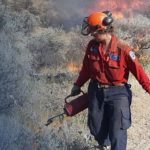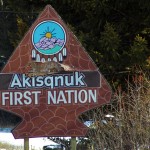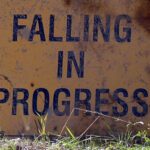Home »

CFB takes leadership role after Grand Forks Flood
Special Feature
When the Kettle River spilled its banks on May 10/11 (2018) it plunged a great many Grand Forks and area residents into an uncertain future.
During the peak of the flood, around 1,600 properties and about 4,500 people in the Regional District of Kootenay Boundary were on evacuation order. Thirty people had to be rescued at the outset of flooding as more than 400 homes were damaged through the disaster, which also featured the arrival of members of the Canadian Armed Forces to help out.
The last time the community experienced a flood like this was 1948 but by all accounts the flood of 2018 was a full two feet higher at its peak.
 Two months after the flood the town of 4,049 and region of 12,000 was still reeling from the damages. Dozens of downtown businesses remain closed, some with hazmat suit wearing restoration workers within and uncertainty lingers as to how many will re-build, all the while hundreds of residents continued to clean up (pictured above) and many business owners remain on the outside looking in at insurance or government support.
Two months after the flood the town of 4,049 and region of 12,000 was still reeling from the damages. Dozens of downtown businesses remain closed, some with hazmat suit wearing restoration workers within and uncertainty lingers as to how many will re-build, all the while hundreds of residents continued to clean up (pictured above) and many business owners remain on the outside looking in at insurance or government support.
 Grand Forks-based Community Futures Boundary watched the disaster unfold and quickly realized that many people were falling through the cracks in terms of available financial help.
Grand Forks-based Community Futures Boundary watched the disaster unfold and quickly realized that many people were falling through the cracks in terms of available financial help.
The province’s disaster recovery fund isn’t working “very well,” said Community Futures Boundary general manager Wendy McCulloch.
“The insurance programs impact the disaster recovery fund,” she said, explaining that if property owners living in the disaster area didn’t check the box saying ‘flood,’ “then you’re not covered. But because of that you can’t access the disaster recovery fund.”
The disaster recovery fund is supposed to kick in when insurance does not but “the complication is many of the residents and businesses in the Grand Forks Boundary Region, either weren’t eligible for flood insurance because they are living in the flood plain or they declined that insurance because the cost of the deductible is so high for the relative coverage that it didn’t make sense,” explained Jennifer Wetmore, Manager, Community Economic Development, Community Futures Boundary.
Around all the clauses, catches and curves in the insurance disaster recovery trail, is the stark reality that people need help, Wetmore said.
“They need help, they need insurance help now. Nobody seems to be in a position to do that so we on the front line of the community are trying to manage expectations and give people hope at the same time. It’s complicated. It’s a very different approach to a wildfire (recovery process) but there are similarities. But nobody has got the playbook yet.”
Trying all it could to help out, Community Futures reached out to the BC Economic Development Association to do a business/disaster recovery report, where they met with many business owners impacted.
They learned quickly that it was not going to be a quick or easy recovery for many businesses.

Almost two months after the flood, “a lot of them don’t even know if they are going to be able to get back into their buildings,” McCulloch said.
She explained that “three critical values” were attached to their buildings: red, meaning you can’t go back; yellow, they need structural attention; or green (can go back but work on building still required).
“The ones that are yellow and red, there is structural damage, where engineers have to take a look at them or there is mold,” she said, adding “and a lot of those business owners have houses that are gone, too.”
Community Futures is now trying to determine steps to be taken to try and help those impacted by the flood, she said, but a great deal has to be taken into account.
“A lot of business owners in the community are waiting to find out what the municipality will be doing in the downtown core, in particular to make sure this doesn’t happen again from an infrastructure perspective. But all that has been hinging on the fact that we have had hydrological assessments of what the river is now doing, how it is flowing, what it looks like it will be doing next year.”
As of the beginning of July there were 41 businesses that remained closed in downtown Grand Forks. The number of home-based businesses impacted is uncertain.
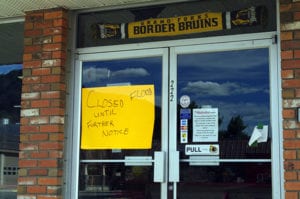 “The bigger issue is those that are open or those that are in the process of coming back have had significant loss of income hits, through the cancellation of three significant community events,” Wetmore said. “It’s the loss of income as they sit and wait.”
“The bigger issue is those that are open or those that are in the process of coming back have had significant loss of income hits, through the cancellation of three significant community events,” Wetmore said. “It’s the loss of income as they sit and wait.”
On the residential end, by the beginning of July there were still about 100 Grand Forks residents displaced from home.
The province appointed an emergency operations recovery team, which operates from four basic pillars: Business; housing; environment; and human/critical infrastructure.
Community Futures Boundary took the role as community recovery team leader.
McCulloch said the provincial government has someone local working on the watershed management and “housing is still unsure. Here we are two months later and it is still unsure.”
In the aftermath of the flood, “it took about seven to 10 days to actually realize what happened,” Wetmore said. “And we’re still not there because it is much different than a wildfire.”
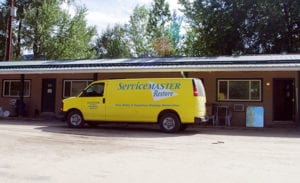 With many of Grand Forks’ motels and hotels impacted, tourism has taken a major hit this year. An annual ball tourney that consumes the town had to be called off and a triathlon at Christina Lake was cancelled, for example – annual events that mean a big deal to small towns, as businesses plan around them.
With many of Grand Forks’ motels and hotels impacted, tourism has taken a major hit this year. An annual ball tourney that consumes the town had to be called off and a triathlon at Christina Lake was cancelled, for example – annual events that mean a big deal to small towns, as businesses plan around them.
The agricultural community has also been hit hard from loss of land and fencing etc. “We are going to rally really hard for that sector,” Wetmore said.
Community Futures’ Work BC Program has brought “hundreds” of people through the Grand Forks office since the flood of 2018.
Prior to the flood, Grand Forks had been experiencing a surge in housing sales by people from the Okanagan, seeking smaller and more affordable communities, and the economy was stable and growing.
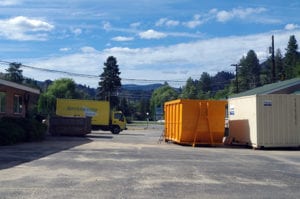 “I think it is going to be a long, long recovery. I think the challenge will be keeping people here in the next five years. Somewhere down the line we will get back and be better than where we were,” Wetmore said.
“I think it is going to be a long, long recovery. I think the challenge will be keeping people here in the next five years. Somewhere down the line we will get back and be better than where we were,” Wetmore said.
Defeating a growing stigma that wildfire and floods are regular things will be difficult, she added.
Thanks to a recently regular procession of wildfires near Grand Forks and flooding, there is a concern younger residents will begin to think about looking elsewhere to live.
“The impact on the social piece of this is really significant,” she said. “I am sure it is the same around the province.”
Better planning and recovery consideration is required as B.C. continues to wrestle with wildfires and flooding.
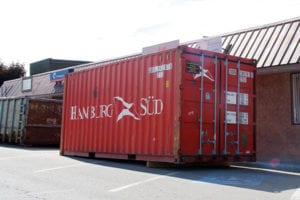 “I think Community Futures organizations and rural communities have an opportunity to be thinking about that. In our case, we had no plan,” Wetmore said.
“I think Community Futures organizations and rural communities have an opportunity to be thinking about that. In our case, we had no plan,” Wetmore said.
“It’s organic; we’re trying to figure it out and right now it is certainly consuming a lot of time but the province has a desire to create a more community-driven approach to disaster recovery because it costs them a lot of money. They are trying to figure out how to do this better from the ground up,” she said.
Meanwhile, roughly 25% of Grand Forks’ business community is out of commission and a precious summer season is passing.
McCulloch and Wetmore both noted they realize that all of rural B.C. is in the same boat, with wildfires and flooding occurring everywhere and a better reaction plan to disasters, including improved communications, is required locally, as well as province-wide.
 “We’ve got a long road ahead of us,” McCulloch said.
“We’ve got a long road ahead of us,” McCulloch said.
Meanwhile, Grand Forks remains “open for business,” she said, noting visitors will still enjoy the same experiences they have before.
Lead image: The flood caused the closure of several motels in Grand Forks, as well as the cancellation of annual events that play a big role in tourism revenues. Photos by Ian Cobb and Carrie Schafer
– This is the third and final article commissioned by Community Futures East Kootenay
– Ian Cobb

